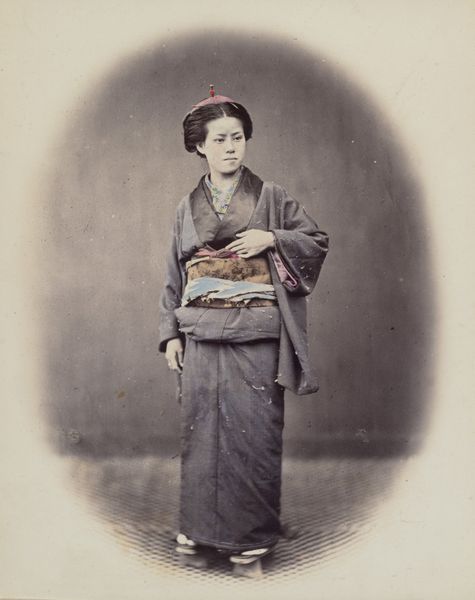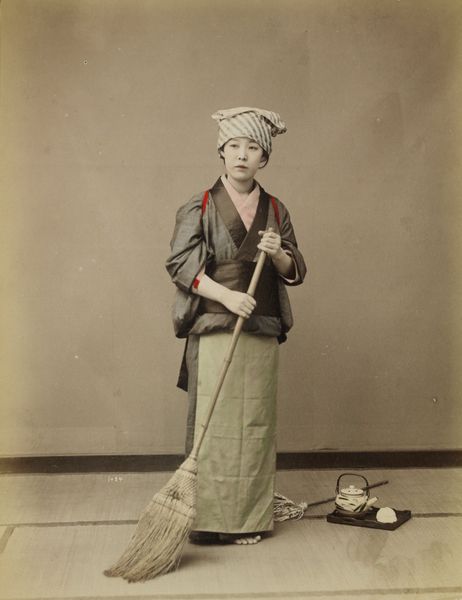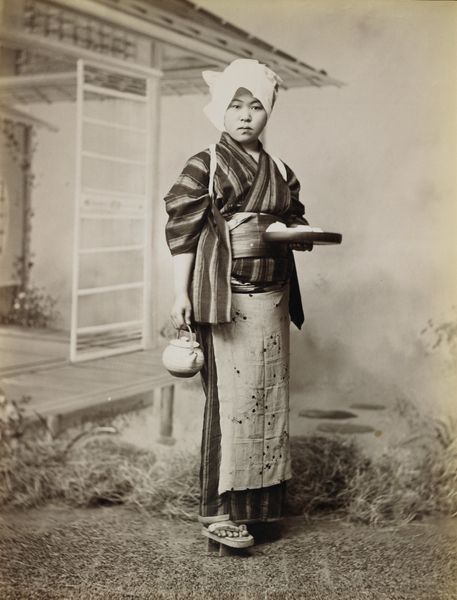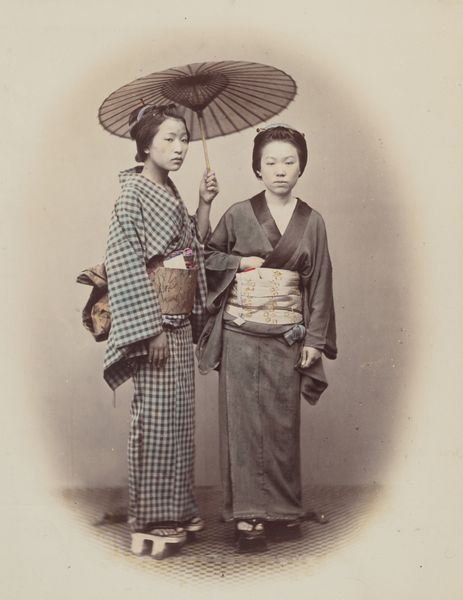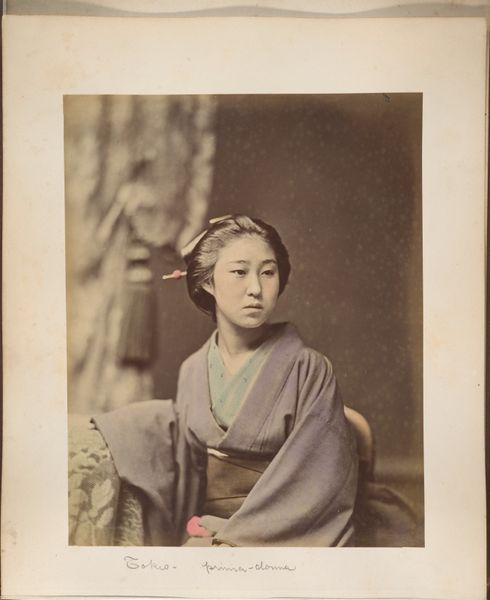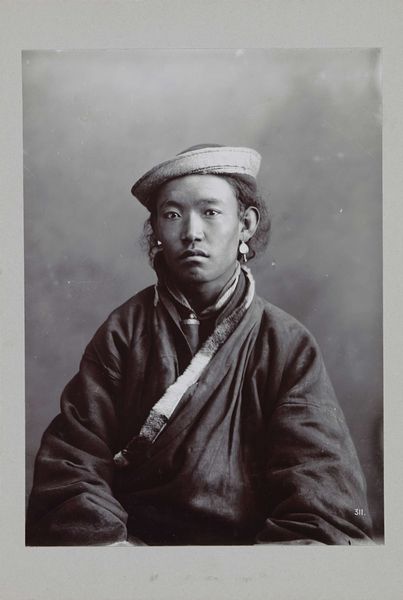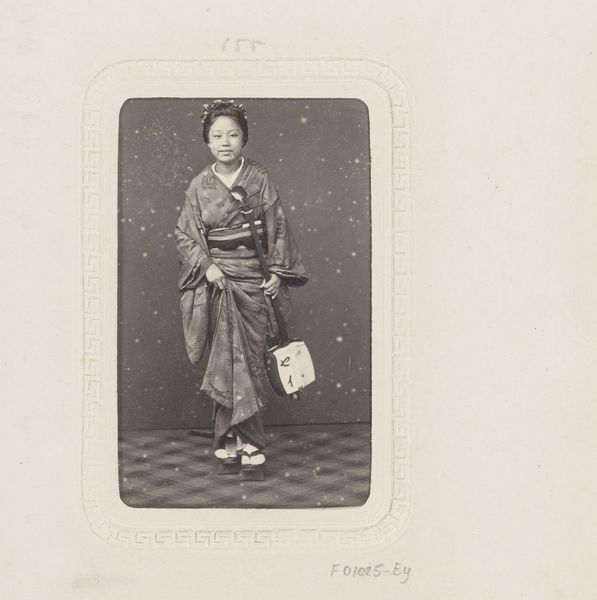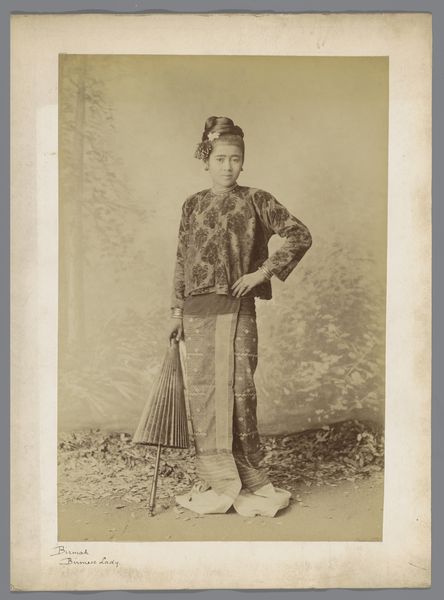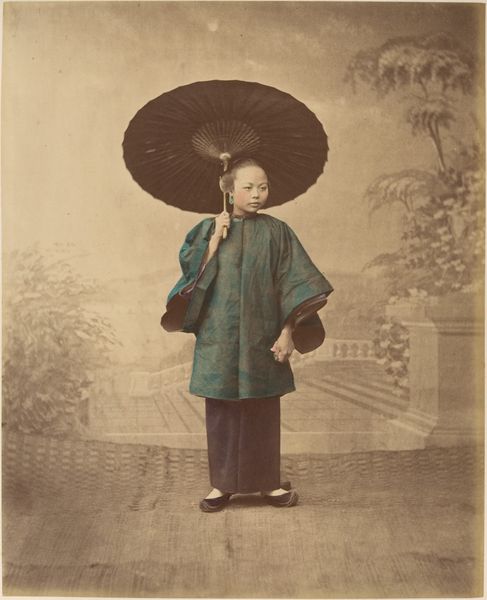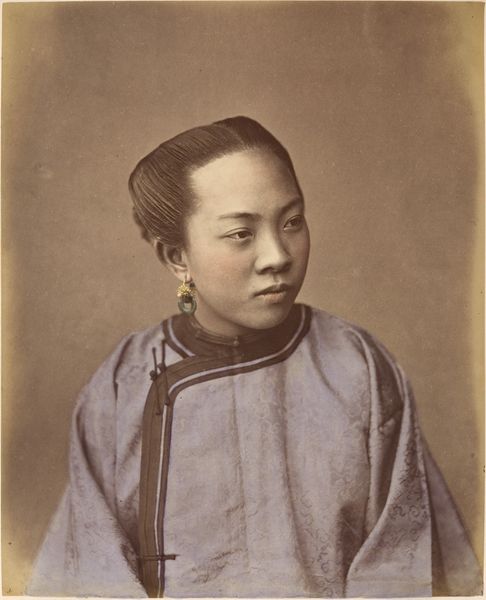![[Japanese Naval Officer]
[Studio Portrait: Japanese Man (Tateise Onogero) Standing Holding Hat and Sword] by Felice Beato](/_next/image?url=https%3A%2F%2Fd2w8kbdekdi1gv.cloudfront.net%2FeyJidWNrZXQiOiAiYXJ0ZXJhLWltYWdlcy1idWNrZXQiLCAia2V5IjogImFydHdvcmtzLzIzYzA1MzU5LTZhMTktNGJmMC05YTU0LTU4MDNkMWM5ZWJhMC8yM2MwNTM1OS02YTE5LTRiZjAtOWE1NC01ODAzZDFjOWViYTBfZnVsbC5qcGciLCAiZWRpdHMiOiB7InJlc2l6ZSI6IHsid2lkdGgiOiAxOTIwLCAiaGVpZ2h0IjogMTkyMCwgImZpdCI6ICJpbnNpZGUifX19&w=3840&q=75)
[Japanese Naval Officer] [Studio Portrait: Japanese Man (Tateise Onogero) Standing Holding Hat and Sword] 1867
0:00
0:00
photography
#
portrait
#
asian-art
#
photography
#
men
#
realism
Dimensions: Image: 8.7 x 5.5 cm Mount: 10.5 x 6.2 cm
Copyright: Public Domain
Curator: The photograph we’re looking at, titled “[Japanese Naval Officer] [Studio Portrait: Japanese Man (Tateise Onogero) Standing Holding Hat and Sword],” was created in 1867 by Felice Beato. It resides here at the Metropolitan Museum of Art. Editor: Immediately, I am struck by the quiet formality of this portrait. The way the light catches the ceremonial sword, the somewhat faded hand-coloring… it evokes a very particular, almost melancholic mood. Curator: That melancholy resonates with me. This image appears to have been captured during a tumultuous time when Japan was grappling with the forceful intrusion of Western powers. It presents us with the complexities of identity and cultural preservation in a rapidly changing world. Notice the way he presents, the mix of tradition with what I presume is emerging modernity. Editor: Absolutely, that tension is palpable. I'm drawn to the details. The subtle hand-coloring draws attention to specific symbols – the bright ribbons on the sword, and also the handle, that give the portrait a vibrant yet controlled energy. The hat and the sword suggest that he might be affiliated to samurai warriors in Japan. The pose communicates a great deal, also. I imagine him posed this way by Beato, in his photography studio, suggesting a visual construction of a certain image or a particular persona of "Japan" through portraiture. Curator: That’s a great point about the constructed nature of the image. Photography at this time was often used to create ethnographic records but, simultaneously, these images circulated in very specific ways to represent the cultures under their scope. Beato also uses visual codes here to tap into Japanese conventions of representation, and probably cater to European audience's expectations of "Japan". The subject is holding what seems to be a warrior’s hat—rather an interesting juxtaposition against the soft colors and textures in the garment, even on the woven mat he stands on. What contradictions do these choices communicate, about status, for example? Editor: Perhaps about a traditional status confronted by an oncoming world? These hand-colored elements hint at layers beyond the photograph, the image becomes almost like a talisman to a set of values challenged by colonial interests. And also what these things can represent – a way for audiences to see, to "capture", some imagined authenticity that has value for that very market? I would not discard these possibilities. It also could represent an ideal of masculine identity in transition. Curator: These are such crucial layers. These studio portraits were never simply neutral recordings. Understanding the historical and cultural context—the complex power dynamics—gives us a much richer, more nuanced understanding of what we are seeing. Editor: Yes, images always seem to be speaking a visual language and we just need to spend time interpreting it. This photograph is a prime example of cultural continuity, as it displays visual tropes and signs, while we understand some of their meanings, perhaps there's an entire story left for us to learn.
Comments
No comments
Be the first to comment and join the conversation on the ultimate creative platform.
